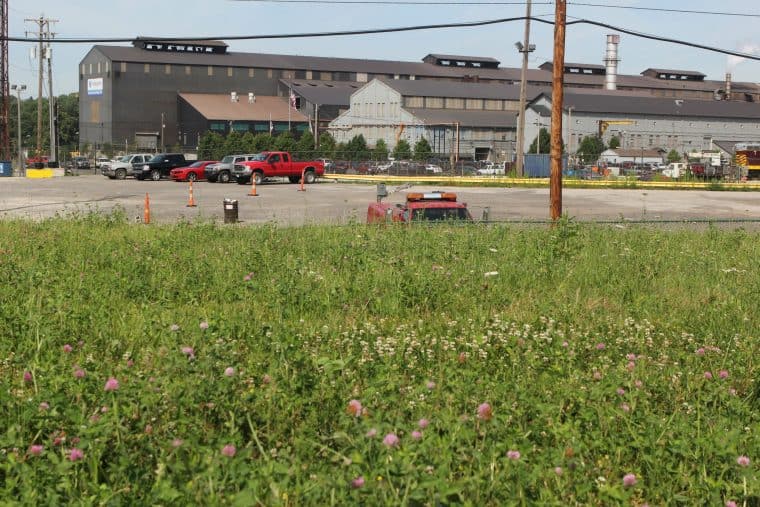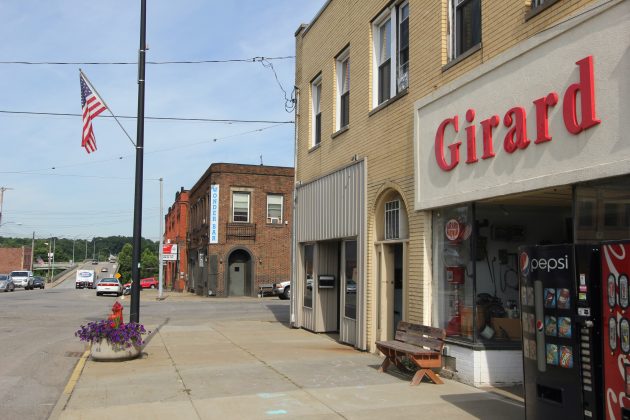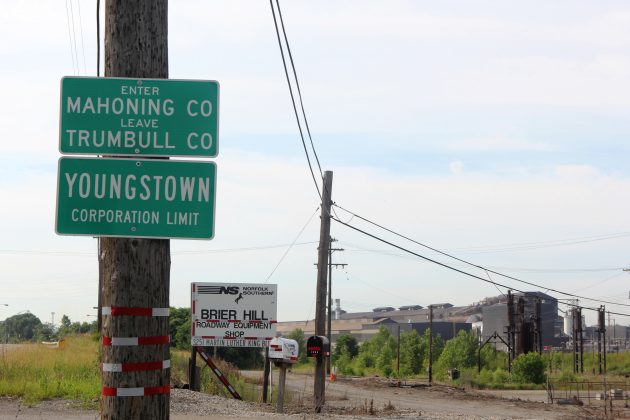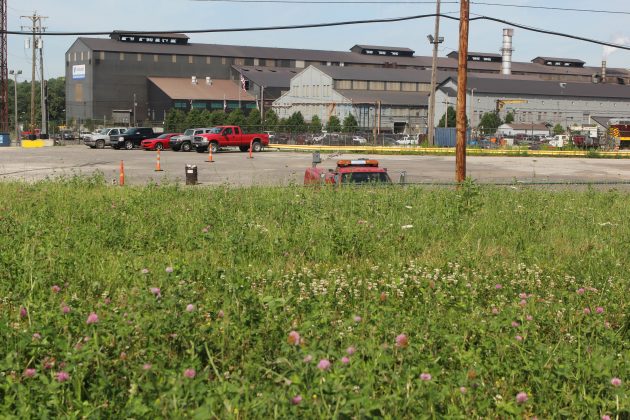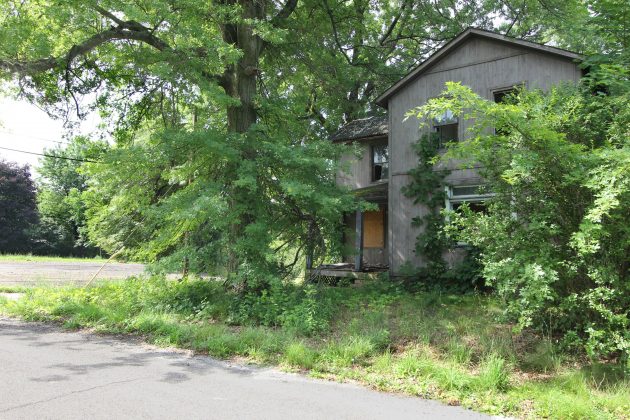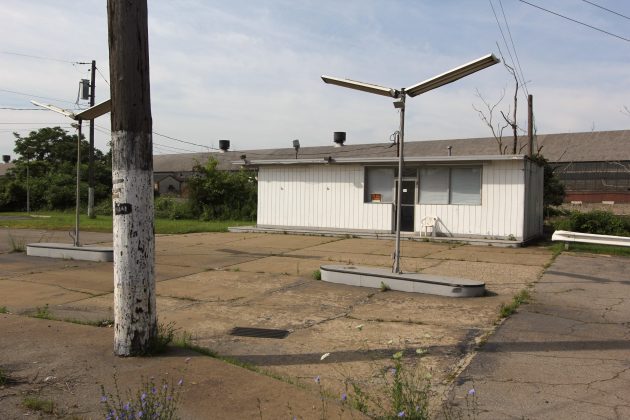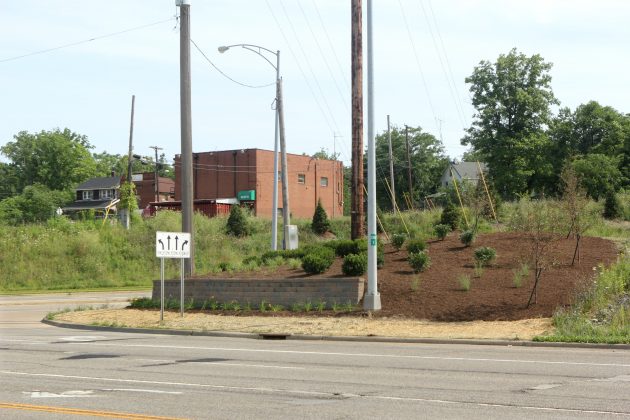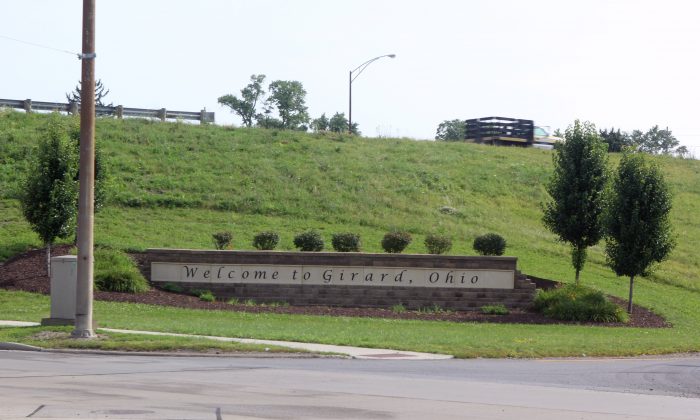422 corridor study provides blueprint for improving blighted stretch | With the recent $1.2 billion expansion by Vallourec Star, a consensus emerged that decay and vacancy issues affecting 422 would have to be addressed.
The stretch of U.S. Route 422 between Youngstown and Girard once represented one of the busiest sections of a growing Mahoning Valley. Companies like Ohio Leather Works, Unger Brothers Packing and the massive Youngstown Sheet and Tube Brier Hill Works, lined the heavily traveled route. Deindustrialization in the 1970s ended a long era of both economic growth and pollution in the corridor, but left behind all varieties of blight.
With the recent $1.2 billion expansion by Vallourec Star, located on the former Youngstown Sheet and Tube site, a consensus emerged that decay and vacancy issues affecting 422 would have to be addressed.
A core project team consisting of the Youngstown/Warren Regional Chamber, the Trumbull County Board of Commissioners and the Youngstown Neighborhood Development Corporation helped bring together 15 different funders to commission a comprehensive redevelopment plan for the corridor.
The group ultimately chose Interface Studio LLC of Philadelphia as the consultant for the project, and a nine-month planning process (from July 2013 to March 2014) commenced. The finished study is a blueprint outlining short-term and long-term steps to improve the appearance of the corridor and spur neighborhood revitalization and economic development in the area.
A master plan for the project was unveiled at a press conference in early June. According to figures contained in the study, the cost for the 422 corridor improvements could range from $20 to $40 million.
The corridor area is bounded by Liberty Street to the north, the edge of downtown Youngstown to the south, Wirt Street and 711 to the east, and Meridian Road and I-680 to the west.
The first priority will be clearing the corridor of the residue left behind by decades of blight.
“Just because an area is an industrial area, doesn’t mean it has to look like an industrial area,” said Youngstown 3rd Ward Councilman Nate Pinkard, who represents part of the neighborhoods contained in the study area.
Removing trash, old wires and industrial debris is a key part of the initial redevelopment phase.
According to the report, around 34 percent of the target area is vacant. Prepping some of these areas for the needs of modern industry is highly recommended by the study.
“How do we attract more industry into that area? That’s the next component,” according to Pinkard. “We are looking at businesses that will service the steel industry, especially Vallourec.”
Readying 422 for further industrial use, however, is just one step. Although only 14 percent of the corridor area is currently residential, neighborhood development is a key part of the effort going forward.
The YNDC, known primarily for urban planning and housing development, played a large role in the process. “Our intention was to see if not only could we create some jobs and improve the corridor for economic development purposes, but clean- up what are historic, but also severely distressed neighborhoods,” said YNDC Executive Director Ian Beniston. The Steelton and Brier Hill neighborhoods in Youngstown, and Parkwood in Girard, are all in the corridor zone. Brier Hill, in particular, is filled with vacant parcels and abandoned housing. The Mahoning County Land Bank (formerly Lien Forward Ohio) demolished 121 buildings there in recent years as part of the “Brier Hill Action Plan.”
Continuing neighborhood improvements and cleanups should complement housing investments already made with completion of the Village of Arlington, which replaced the old Westlake Terrace apartments, and the $10 million renovation of the Brier Hill annex apartments in 2012. Kitwanna Bailey lives on the edge of Girard near Brier Hill. Though his neighborhood is not affected by widespread blight, conditions around 422, especially at the Vallourec mill, impact his quality of life.
When jogging on 422, he encounters a variety of obstacles. “They don’t have any sidewalk or anything that’s on my side of the road. So, I have to run in the street or in the grass and hope it’s been maintained or cut.”
The sometimes-extreme noise pollution emanating from the industrial corridor is also an ongoing problem for him. “It can be around eleven at night and you hear a BOOM! And your windows start shaking,” said Bailey. You wonder if they’re going to break or not.”
The study includes contingencies to deal with these quality-of-life concerns. It calls for pedestrian paths and bike lanes, as well as installing landscaped berms that would both obscure the mill from the street and reduce the noise from industrial operations. Along with planting “color fields” of flowers, these investments could radically transform the look and sound of the area.
Any potential improvements are sure to benefit the City of Girard. Not surprisingly, Mayor James Melfi is a major supporter of the plan. “If we can stretch improvements to downtown, we can reinvigorate not only the corridor, but also the central business district.” According to Melfi, Girard has received inquiries into constructing a hotel, and to his mind the study represents a “road map for the future.”
Some of the more expensive aspects of the plan will require transportation grants. “We want to move forward fairly quickly and bite off some quick victories,” said Beniston. An implementation task force and a project manger will guide the process of acquiring complicated grants and funding for the more expensive physical infrastructure projects.
Metro Monthly is a local news and events magazine based in Youngstown, Ohio. Stay connected with news, features and essential Valley events. We circulate throughout the Mahoning Valley (and beyond) with print, online and flipbook editions. We offer print and website advertising. Office: 330-259-0435.
© 2014 Metro Monthly. All rights reserved.

